Anyone who has ever had to deal with mold in their tent knows how annoying it can be, especially if you suffer from mold allergies. Mold can ruin a camping trip by making the place you sleep miserable and possibly dangerous. Prevent mold build-up in tents with these simple tips.
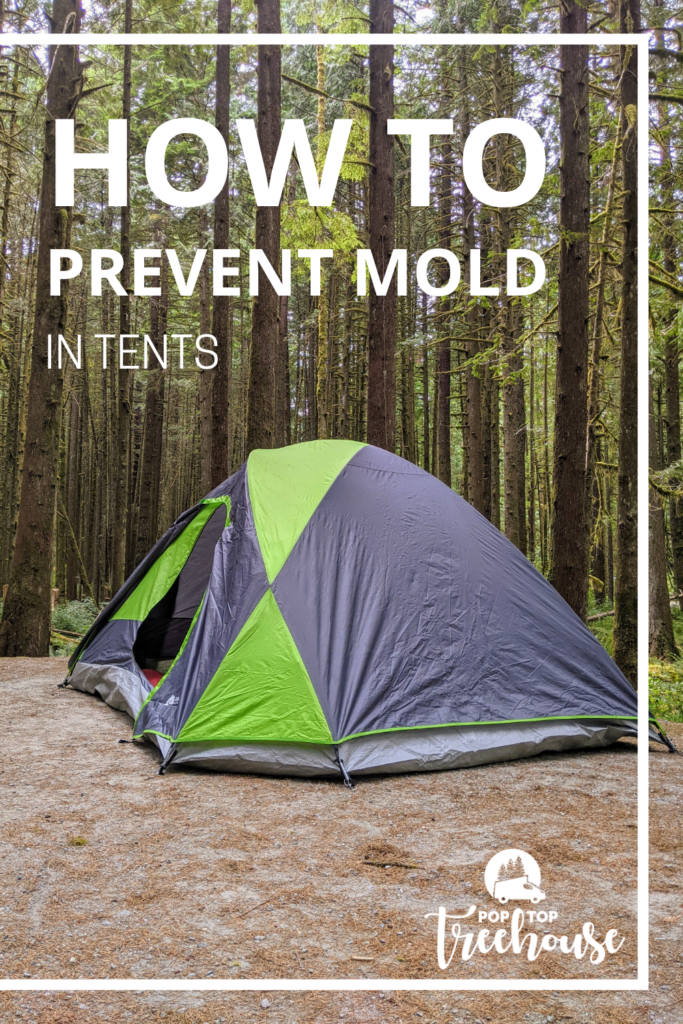
One of the most common mistakes I see with beginner campers is not understanding the importance of learning how to prevent mold build-up in tents. Every time you pack up the tent, it should be perfectly dry. I know that mother nature doesn’t always have that in the cards when we pack up camp, but there are some things we can do while camping to help!
If I had to pack up while raining, I patiently wait for the next sunny day. You should see my backyard! It looks like a campsite itself with all my stuff lounging away in the sun drying out. I’m sure the neighbours don’t mind (wink wink).
It’s especially important on your last camping trip of the season to pack up the tent perfectly. If an even slightly damp tent sits in storage for the winter, it won’t look pretty come spring. And when you’re so excited to head out on your first camping trip of the season after a dreary winter, it’s the biggest mood killer out there.
So don’t let this be you!
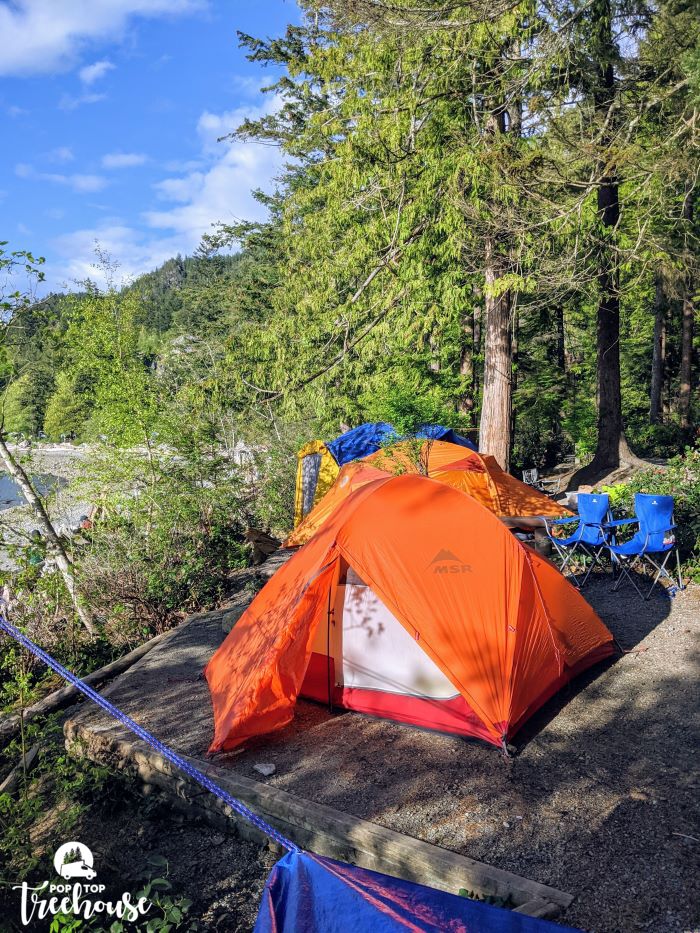
How to Prevent Mold Build Up in Tents
Mold will begin to grow if you do not adequately dry out your tent and when moisture begins to accumulate inside the tent. Your tent will be especially susceptible to mold growth if you regularly camp in very moist and warm areas.
This can also happen after coming home from a camping trip where moisture got inside your tent. If you don’t clean and dry out your tent before storing it for the season, mold is sure to occur. Besides just cleaning and making sure your tent is dry, there are a few things that you can do to help protect your tent against mold buildup.
Invest in a Tent Footprint
First, you can help keep out moisture and protect your tent from wear by buying a tent footprint. A tent footprint helps to protect the bottom of the tent from abrasion and helps to keep moisture out. The thirty dollars spent on a good tent footprint is a lot less expensive than having to replace your tent floor or entire tent because of damage. It also helps to keep you nice and dry while camping in the rain!
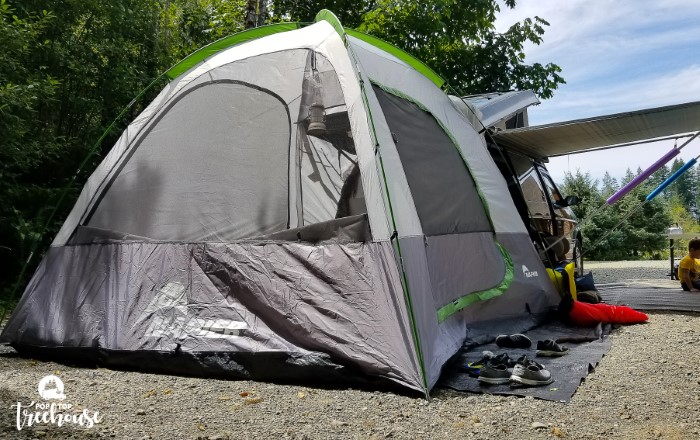
Seal Seams
Make sure the seams on your tent are sealed correctly. You should check the seams on your tent a few days before you go on your camping trip. Use a garden hose and spray the outside of your tent while the tent is completely zipped up. Once you have sprayed the entire tent, turn off the hose and check the inside.
If there are leaks in your tent, a simple seam sealer can likely be bought at any department store near you. Sealing the seams shouldn’t be too hard. Just remember to leave time for the seal to dry; the time is normally printed on the sealant container.
Waterproof Your Tent
If your tent doesn’t bead water correctly, there are some products you can apply to the tent to stop water from collecting in your tent. You can find water repellents and tent proofing products anywhere that sells camping supplies. This will go a long way in keeping your tent dry.
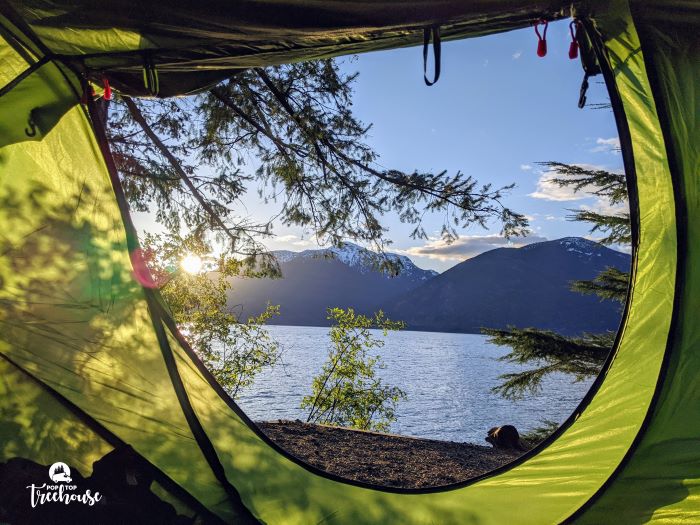
Dry Out Your Tent
Finally, you always need to remember to air dry your tent. This helps to prevent the growth of both mold and mildew in your tent, two things you definitely do not want in there. Mold and mildew growth in a tent can give it a funky odor. And NOBODY wants to sleep somewhere that smells funky throughout the night. Air drying doesn’t take much effort besides setting up the tent, so why not be safe rather than sorry?
And like I said above, if you have to pack up your tent in the rain, bring it back out the next sunny day to dry out. I even have a friend who lives in an apartment and dries out her gear in a nearby park. It’s doable!
All these steps on how to prevent mold build-up in tents don’t take much time and effort and will save you from a lot of hassle and money spent on repairs down the road. It always costs less to prepare for trouble than dealing with it after trouble has already happened.

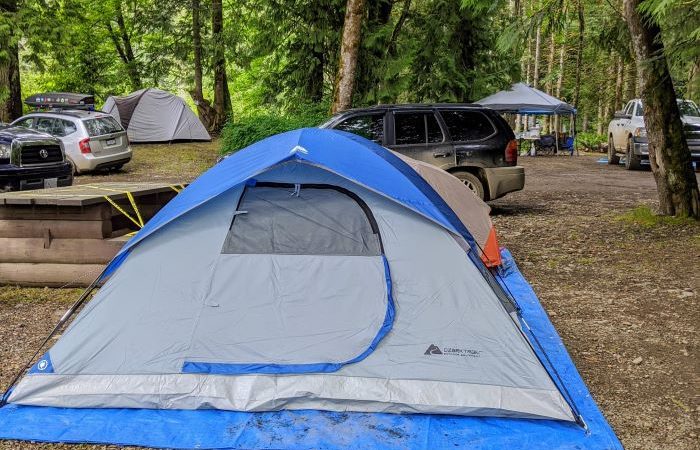
 10 Ways to Exercise While Camping
10 Ways to Exercise While Camping

These photos are problematic – if you leave the edges of your ground sheet exposed outside the perimeter of your tent, it will collect water during rainfall and pool it under your tent, having the exact opposite of the intended effect. Always fold and tuck the excess under your tent!
Great tips, thank you!